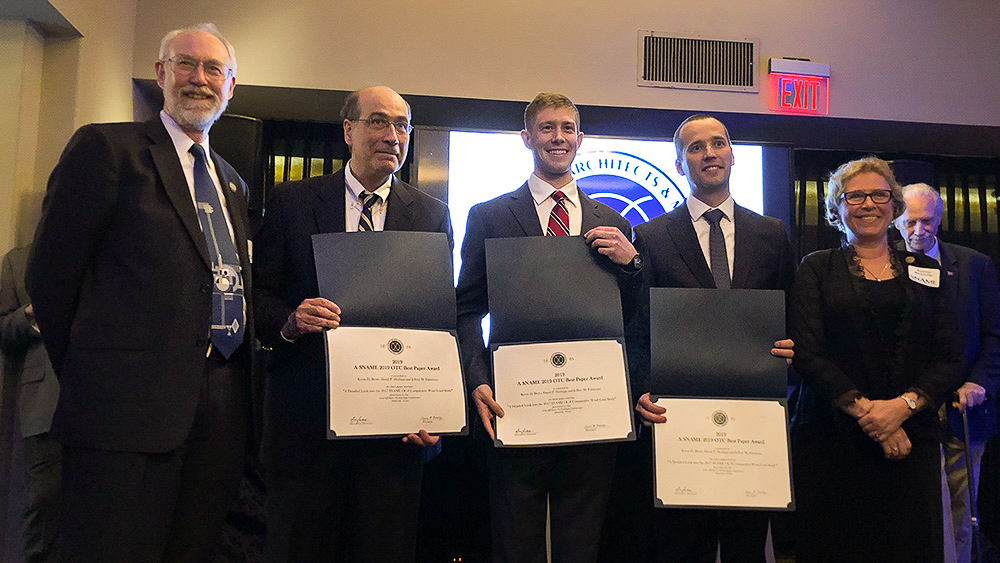
Kevin Berto knew a graduate degree in ocean engineering would well equip him to contribute to the offshore energy industry. This quickly proved to be true as his advisor Dr. Jeffrey Falzarano pointed him to a joint industry/academic research panel that was the perfect opportunity to draw upon his previous work experiences and further his educational pursuits.
Organized by the Society of Naval Architects and Marine Engineers’ (SNAME) Offshore Committee for Wind Technologies (OC-8), the panel focused on assessing how well the industry estimated wind-induced forces and associated overturning or capsizing moments on floating offshore installations using the currently available methods.
“The study’s focus resonated with me because wind is the only environmental factor explicitly considered in the U.S. Coast Guard safety regulations for the stability of offshore units,” Berto said. “Therefore, it is important that the industry designers get their estimates correct and that the U.S. Coast Guard regulations afford these units an accurate safety margin to survive the worst-case storm conditions. I felt I could play a role.”
The study itself marked history as one of the largest collaborative efforts of a panel with over 25 diverse industry stakeholders contributing in-kind data to the SNAME OC-8 Wind Load Comparative Study. Berto served as the objective voice in receiving, analyzing and drawing conclusions from the raw data. The findings were published in an Offshore Technology Conference paper titled, “A Detailed Look into the 2017 SNAME OC-8 Comparative Wind Load Study,” which was a SNAME OTC Best Paper Award winner.
“The study provides an avenue to better protect lives, the environment and the economic vitality of the offshore energy industry,” Berto said. “In order to do this, we must be able to accurately and consistently estimate the environmental forces imposed on the vessel.”

The most exciting finding of the SNAME comparative study was the low variability and consistency of test results from the five contributing wind tunnels. In further significance was that the results from the numerical, computer-based equivalent of wind tunnel testing, known as computational fluid dynamics (CFD), were largely indistinguishable from the wind tunnel results. The findings highlight the potential of CFD as an important engineering tool to design safer vessels.
“Kevin and Texas A&M University's role as an honest broker in comparing the various predictions from the Society of Naval Architects and Marine Engineers (OC-8) wind loads on offshore platforms maintains its leadership position in this area,” Falzarano said.
The industry has been using wind tunnels since the 1960s and the identified method is the present de-facto industry standard for accurately estimating the wind forces and moments on floating offshore units. Historically, however, one of the major holdbacks to regulatory acceptance has been the absence of a validated governing industry standard.
“In an effort to close this gap, this study successfully validated a drafted industry wind tunnel testing guideline, which is a huge step forward picking up from a 1988 SNAME organized and Texas A&M involved effort,” Berto said. “The validated guideline facilitates transparency and improves the reliability of wind tunnel tests.”
Along with Falzarano, Berto worked with co-authors David P. Hodapp, from the Chevron Energy Technology Company; Dr. Edward White, a professor in the Department of Aerospace Engineering and director of the Texas A&M Oran W. Nicks Low-Speed Aeronautical Wind Tunnel; Lisa Brown, a graduate student and test engineer at Oran W. Nicks Wind Tunnel; and more than 25 world-wide industry stakeholders that participated in-kind to this pioneering comprehensive study.